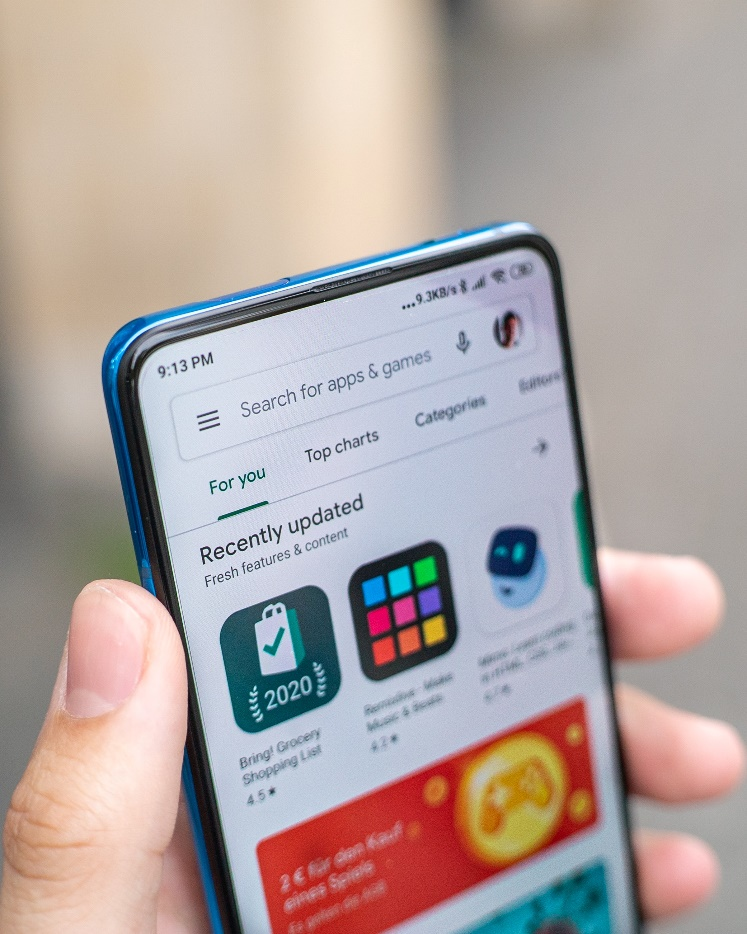Email Address: contact@softwareistic.com | Phone Number: (844) 970-3900
Email Address: contact@softwareistic.com | Phone Number: (844) 970-3900
While considered the final and easiest step in the development lifecycle, publishing an application on the Google Play Store is not as easy as one might picture it. For various reasons, Google has made its policies for app regulations strict, ensuring that applications meet the high standards set by the OS developers.

It’s fairly common for companies to face delays when they fail to meet all of the requirements for the verification and publishing process, having to make another request and starting the process. Here’s a full breakdown of the process and everything that you should know when submitting an app to Google Play:
Target API levels also referred to asking target SDK version to dictate which versions of Android can support the application. You want to maintain a level of backward compatibility while using the newest version possible. For August 2022, new apps must target API level 31 (Android 12) according to Google’s recommendations.
Increasing target API levels can take up a lot of time and is more than making a basic change. There are substantial differences in the codebase along with any 3rd party libraries used in the project.

Google apps now require the App Bundle (AAB), which is essential for uploading content to the Play Store. The bundle’s backend creates an app variant for the device and system it’s being downloaded on. Instead of APKs and APK expansion files (OBB), the Play Asset Delivery or Play Feature Delivery is used.
While the AAB can be enough for most applications, APK expansion files are used when the app size goes beyond 150 MB.
Some of the major terms and regulations that your app has to comply with include the United States laws as well as Google’s Play Store terms. Many of the essential pieces of information are laid out and regularly updated to reflect the latest information on IP, restricted content, and what’s considered spam, malware. Your application has to meet US export laws as the servers are based in the USA, requiring exports for the app to be available to other countries of the world.

Apps using cryptography could have some issues, and you’ll have to look into Play Store documentation and theUS Bureau of Industry and Security’s guidelines on export compliance. You also need to be aware of the local laws of the countries where you’re launching the app in. For example, the GPDR might be a major consideration for any apps being launched in Europe.
After we’ve dealt with most of the technical and legal considerations, we can focus on the various details that will be available for viewing for the end-user.
Every app’s main page consists of an app’s name, a short description of up to 80 characters along with a detailed full description that can be a total of 4,000 characters. These are required on the pages, along with options for supporting different local languages. Be aware that using copyrighted words is best avoided, but you can present permissions such as notices for a government-related property or any other IP if you have them.
SEO (Search Engine Optimization) is also a necessary concern as you don’t want your app to get mixed up in the search result with another app. This is why naming conventions are so important.

Whether your app has to be paid for or free needs to be decided. While you can make a paid app available for free in the future, the application cannot be given a price later on. The only way around it is to launch a new app.
Even if you’re providing a free application, it can use numerous monetization systems, which are all in-app transactions for various features.
Pricing is also fairly complicated when the price of the app reaches the ceiling or floor limit, generally leading to conflicts with exchange rates for numerous other currency options. Make sure you consult the latest table for minimum and maximum pricing.
Users should be able to get an idea of what your application will look like on their device. This requires you to have the app icon and in-app screenshots. If your application runs on Android TV and Daydream apps, you’ll also have to provide material to represent how it will look. All of the material that you provide, such as images, text, or assets, need to comply with Developer Program policies.
This means ensuring that any of the material should respect the laws of Intellectual Property while refraining from using any forbidden content.
The app icon for store listing has to be around 512×512 px and generally resembles the launcher. The Android Asset Studio within the Android Studio IDE can be used to generate varying sizes of icons, which makes the job much more convenient.
As the name suggests, the core feature of your app should be visible to the public through a feature graphic. It’s essentially a 1024×500 picture available on the page.
At the very least, you’re required to provide 2 screenshots of the application. It’s recommended that you switch your app to demo mode and add a screenshot of the various kind of devices that your app supports, including phones, different tablets, TV, and wearables.
It’s not required to add a video in the listing, but it’s a common practice. It helps the user better understand what the application is about. Developers tend to link YouTube videos for the application, so make sure that the video isn’t monetized or private so people see only your ad while also being able to watch the video.
Apps that work with Android TV and Daydream require a TV banner and a 360-degree stereoscopic image, respectively.
Make it easier for the users to find your application on the Play Store by assigning it a category. You can choose one category and 5 optional tags, which will shortlist your application and suggest it to users looking in those options.
You’re also required to add contact information so that your users can reach out to your business for support and help.
The privacy policy text should be documented by a legal team, but there are numerous guidelines you can go by. It’s necessary to give an insight on how you’ll use user data, especially sensitive information. This is extra important if children under the age of 13 will be using your application. Similarly, you need to pay attention to any recent legal regulations that apply to the local areas as well as those parts of the world where your application is available for use
If your application consists of any ads, you have to declare it. These aren’t limited to interstitials or banners, with sponsored articles also being considered ads.
If there are any location restrictions or requirements to sign up, you need to educate your users about these as well to give workarounds.
The major concern parents have regarding whether a particular app has been rated appropriately. For this reason, there are IARC ratings. The PEGI, ESRB , or USK will provide you with a rating, but you’re required to fill out their questionnaire for it.
Newer Play Store pages also clearly state who the target age group is for your application. Note that the younger your potential audience is, the more requirements you have. This is to ensure that the data and interaction of minors are protected, requiring strict privacy policies for the best results. You may have to look into family policies if families are the intended audience for the application.
Because of copyright, legal issues, or any licensing problems, an application might not be allowed in a particular country. The Play Store has numerous operations for this. You can either outright block access from a country, but you can also select a particular mobile operator from having access to the application.
These restrictions can also be adjusted, depending on whether the app is in closed beta or full release.
While generally not considered a great practice, certain devices might not have the necessary features required to run an application. In such a case, you can set a list of requirements for your application, and those devices that don’t meet the needs in the device catalog will not be allowed to directly download the app from the Play Store.